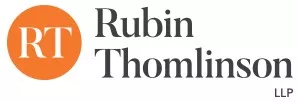- within Strategy topic(s)
- with Senior Company Executives, HR and Finance and Tax Executives
- with readers working within the Accounting & Consultancy, Business & Consumer Services and Environment & Waste Management industries
I saw a post online some time ago that said (paraphrased): "Communication can be so strange. You can say: 'I like waffles,' and someone will respond, 'Why do you hate pancakes?'" I have been reminded of this post several times as I encounter people who seem to be speaking at cross-purposes in various discussions about the current diversity, equity, & inclusion backlash. For example, when some people say that diversity, equity, and inclusion practices could stand to be improved, others will respond that they should not have to apologize for continuing to support the work of diversity, equity, and inclusion. It's interesting to me because the two speakers are often on the same side. However, sometimes I think both sides of the argument, for and against diversity, equity, and inclusion, suffer from the acronym having overtaken the actual principles.
You may have noticed that I keep writing out "diversity," "equity," and "inclusion." That's because when we continually refer to these concepts as merely a bundled-up acronym ("DEI"), it makes it easier to divest the words from their actual meaning. This makes them much less impactful, and people often don't stop to think about what they are advocating for or against. I have yet to encounter anyone who, when asked if they are against diversity, responds with a hearty, positive, "Yes, I am against having different viewpoints in the workplace." Everyone who I have asked agrees that they support people being provided with the specific resources they need to ensure equality of outcomes, and they want everyone to feel valued and acknowledged within the organization.
So, how do organizations get people to think beyond the now heavily weighted acronym? I mentioned in a recent blog that many workplaces are seeking to do so by changing the terminology. While I wish every organization would stand up and unreservedly voice their support for diversity, equity, and inclusion using those words, I am not blind to the political and other realities that exist, particularly for Canadian companies with US operations and vice versa. Nevertheless, calling it something different is not enough on its own. Consequently, I want to suggest a few ways that organizations can try to ensure that their programs which seek to achieve the goals of diversity, equity, and inclusion – howsoever called – stand the test of time and withstand pushback (legal or otherwise).
- Focus on changing systems and structures rather than people.1 Most of society's inequities are structural. This feeds into organizations. It is therefore important to recognize and acknowledge that convincing people on an individual level of the importance of these concepts is not the complete fix. If your company only seeks out recruits from the top 3 Canadian business schools, your organization will be largely filled with people who have much in common and little diversity. Recruitment, onboarding, performance reviews, access to opportunities, and promotions – all of these are systems where inequities exist and/or can creep in. It is fundamental therefore that the systems underlying these processes are carefully reviewed and often standardized.
- Standardize policies and continually review them to make sure that they are not just neutral on their face, but also neutral in impact. Organizations should draft and implement policies that work for a diverse group of people. For example, many dress code and grooming policies can have a discriminatory effect on women and people of specific religions and/or races.
- Encourage transparency in decision-making. When candidates and employees know the metrics that are considered for hiring, performance reviews, and promotion, to name a few, the reasons for decisions are often much clearer and less likely to be challenged. For example, consider two internal candidates with similar educational backgrounds vying for a Vice President role. Candidate 1 is from a historically marginalized group and Candidate 2 is not. Candidate 2 has been with the company longer than Candidate 1, but Candidate 1 has more years of experience successfully managing client relationships. The job description (or introductory stages of the process) made it plain upfront that relationship-building skills would be a strong deciding factor. Additionally, that reasoning is clearly communicated to Candidate 2 in a frank, respectful discussion after they aren't chosen. It is therefore less likely that Candidate 1's identity will be assumed to be the deciding factor.
- Implement initiatives that focus more on "leveling" rather than "lifting."2 "Lifting" initiatives are those that tend to favour a specific, historically marginalized group, whereas "leveling" initiatives are those that make the overall process/system fair. For example, instead of a program that requires the company to hire women for 50% of management roles ("lifting"), the company might work on examining what barriers might exist in the recruitment process that are resulting in fewer women applying ("leveling"). In so doing, some companies have found that, for example, simply automatically opting all eligible individuals into a promotion track increases the female representation of applicants (instead of waiting for women to apply themselves).
- Offer effective training. Even though the research makes it clear that systemic rather than individual change is the real game-changer, with diversity, equity, and inclusion proponents on the defensive these days, organizations have a tremendous opportunity right now to make the point that these principles continue to matter. If you think of all the things that your employees are struggling with today, hearing that their employer values their diversity, the principles of equity and ensuring they are included at work, can go a long way towards employee well-being. Organizations need to offer well-designed training in pursuit of these goals.
Do you want your organization to thrive and operate at maximum capacity? If you do, then you need diversity, equity, and inclusion. Even if your organization feels as though diversity, equity, and inclusion initiatives are risky endeavours at this point in time, these are steps that can be taken to allow organizations to pursue the principles and make diversity, equity, and inclusion so much more than an acronym, even if you end up calling it something else.
Footnotes
1 J. C. Williams, L. J. Maechtlen, & J. Dolkas, "How to Assess the New Legal Risks of Your DEI Policies," (February 27, 2025), online (Harvard Business Review article): https://hbr.org/2025/02/how-to-assess-the-new-legal-risks-of-your-dei-policies?autocomplete=true>
2 K. Yoshino & D. Glasgow, "Steer Clear of 'Illegal DEI' With Leveling—Not Lifting—Programs," (February 10, 2025), online (Bloomberg Law article): https://news.bloomberglaw.com/us-law-week/steer-clear-of-illegal-dei-with-leveling-not-lifting-programs
The content of this article is intended to provide a general guide to the subject matter. Specialist advice should be sought about your specific circumstances.


